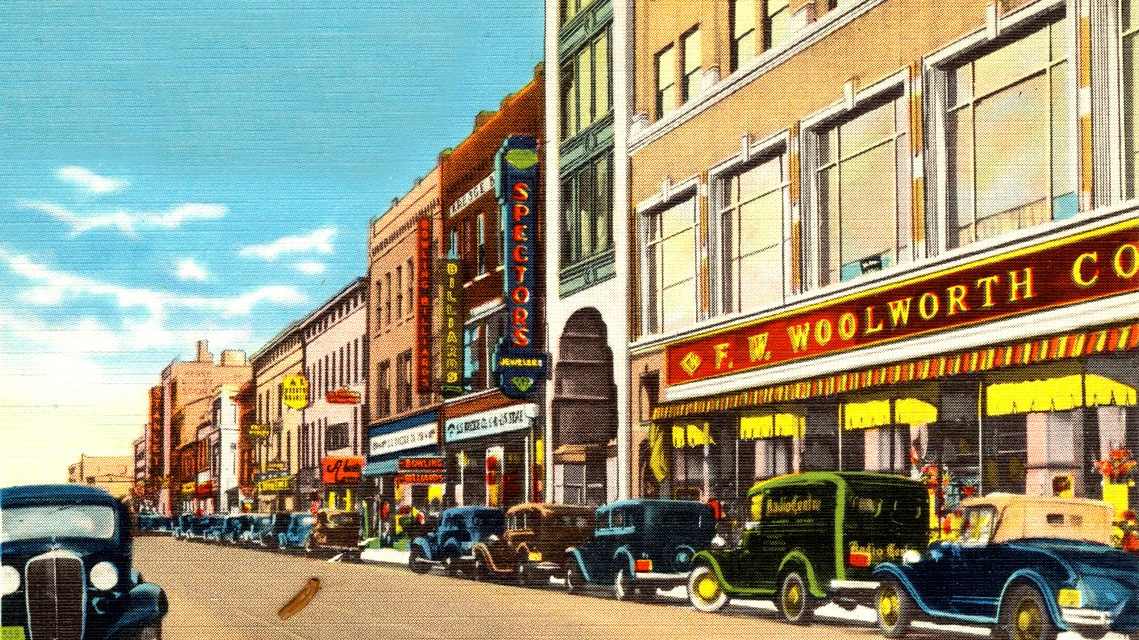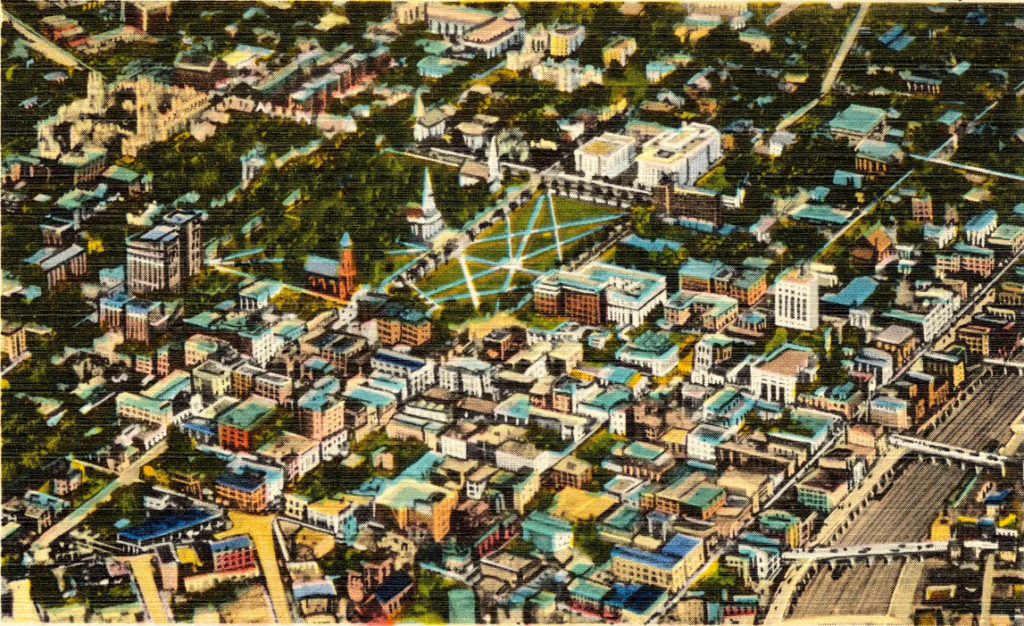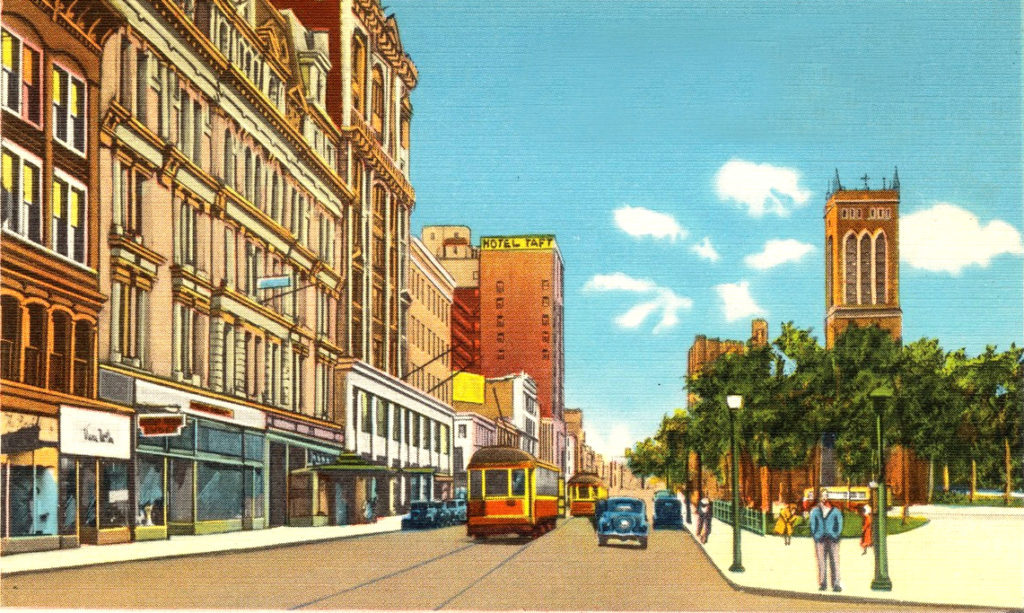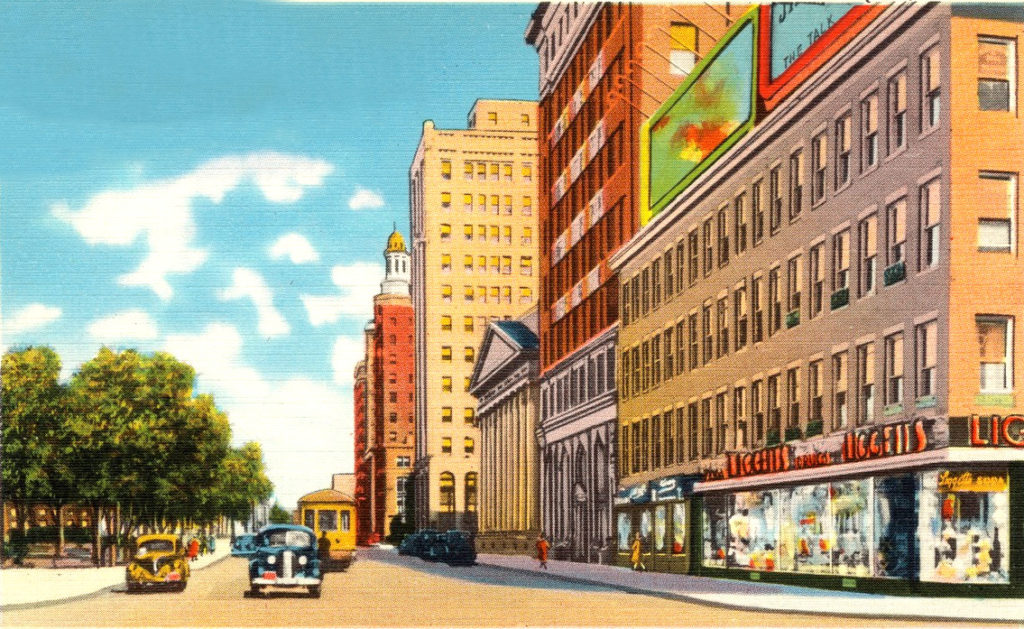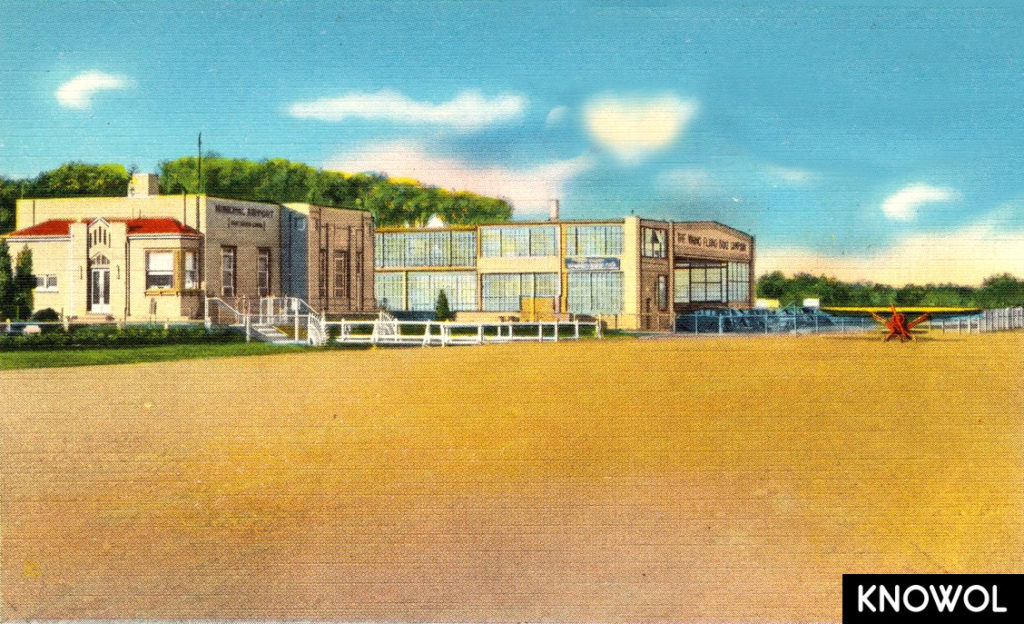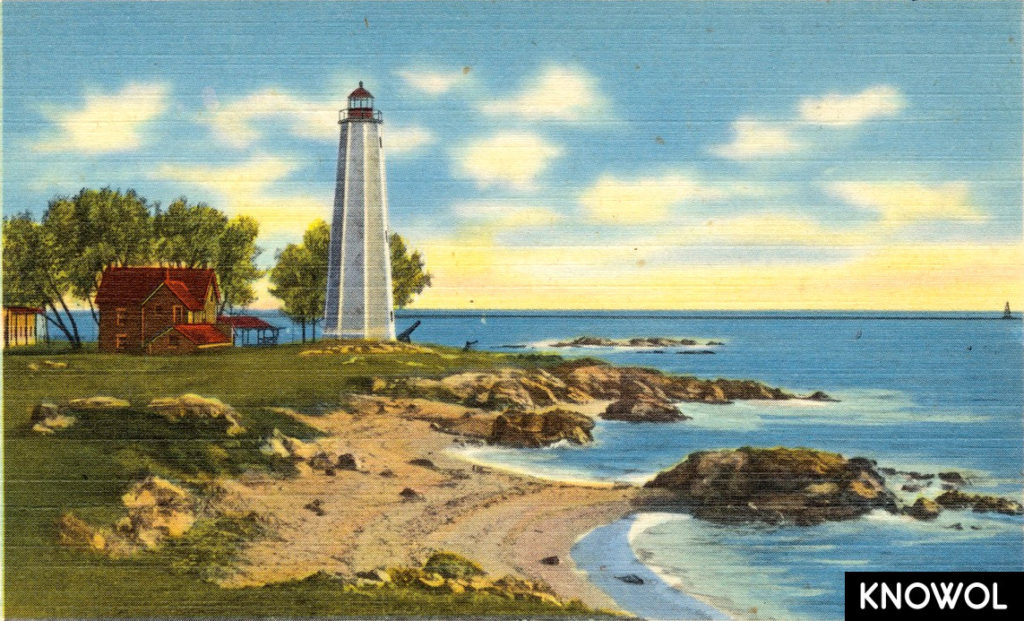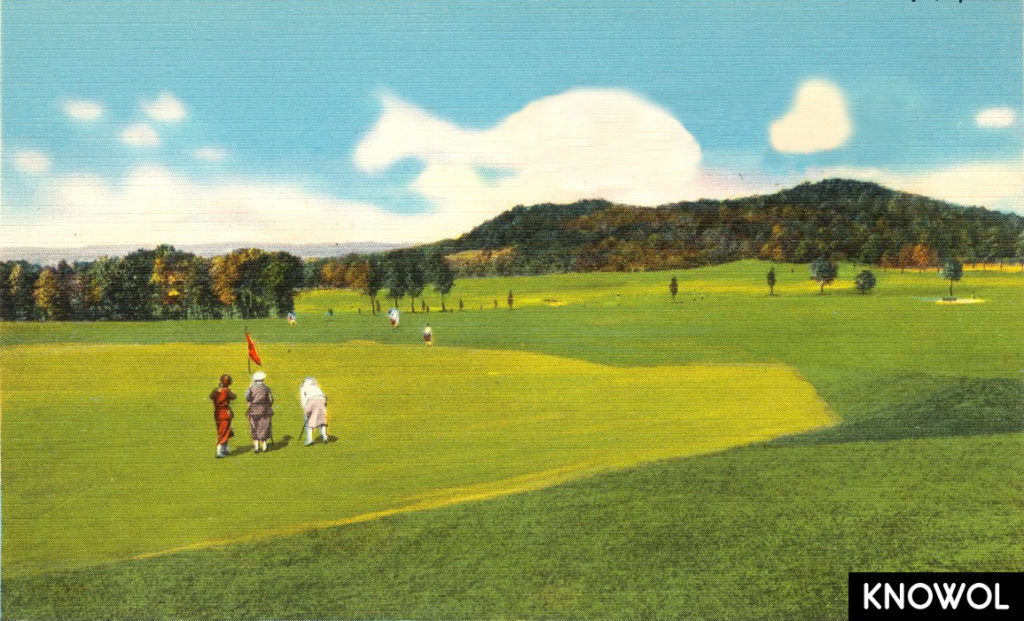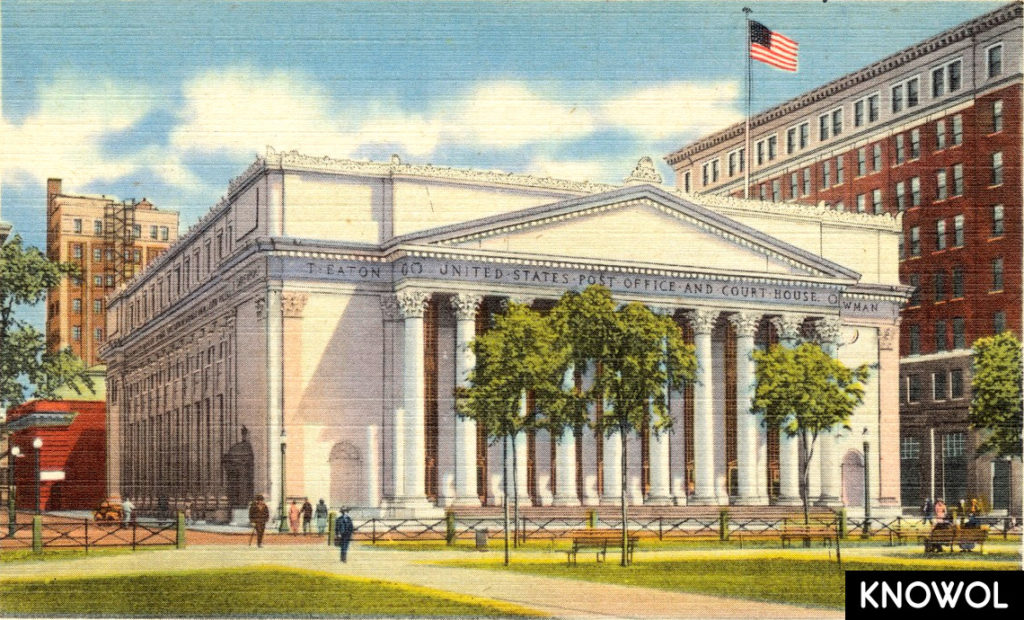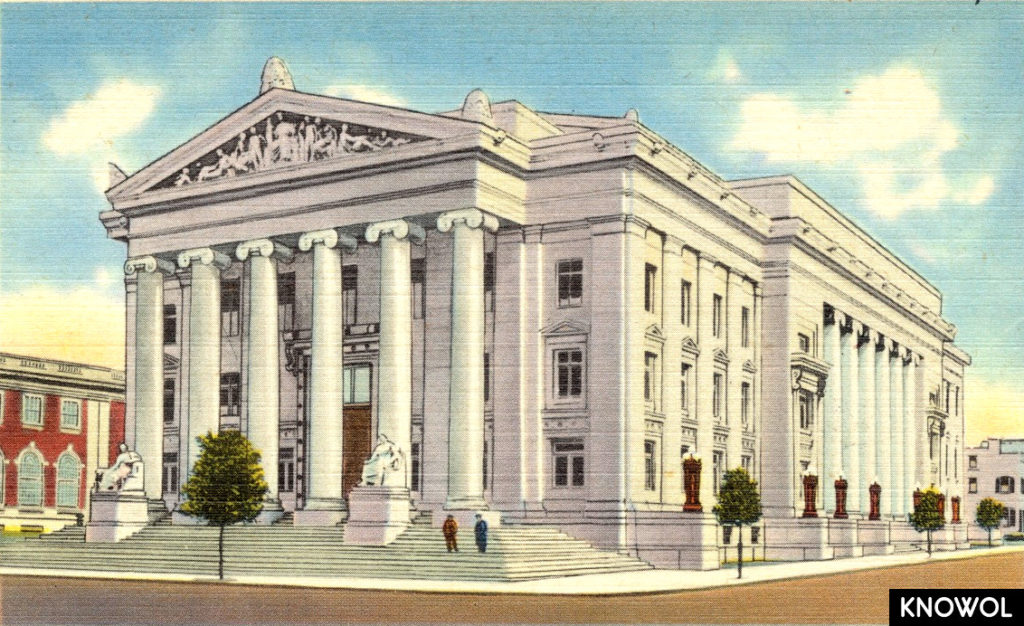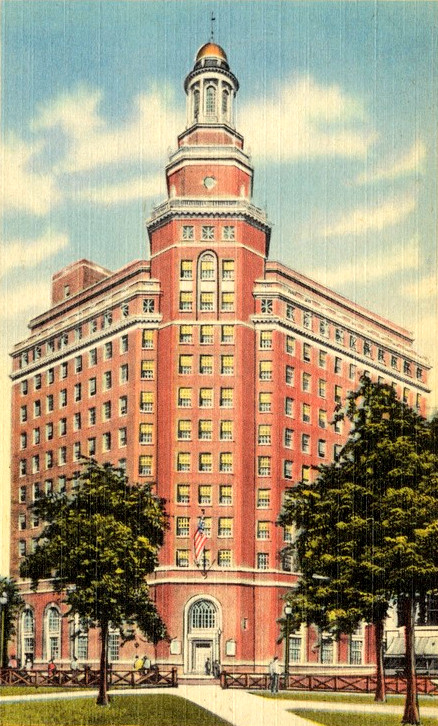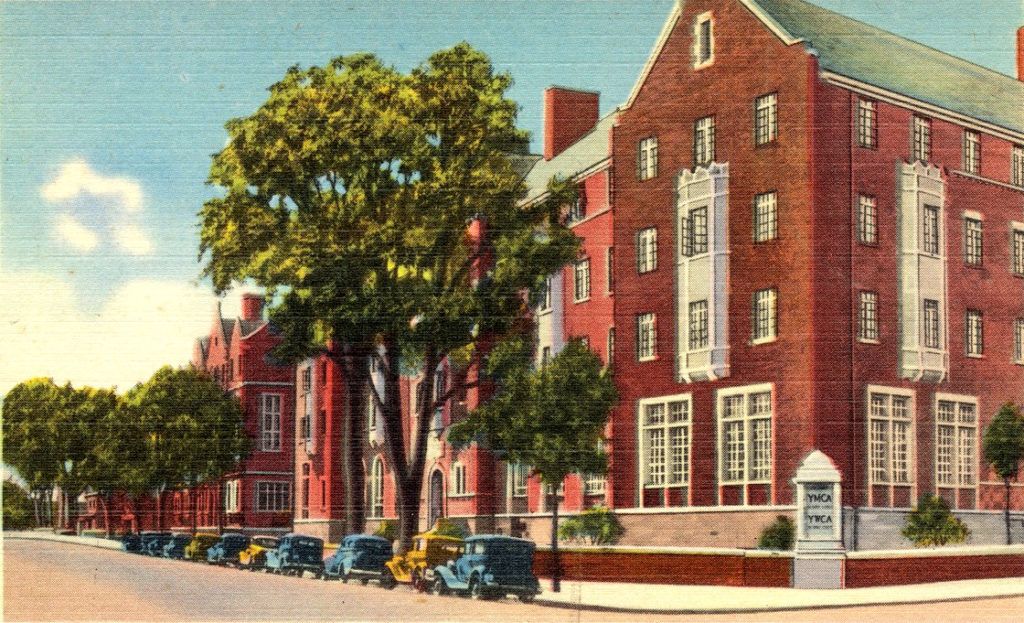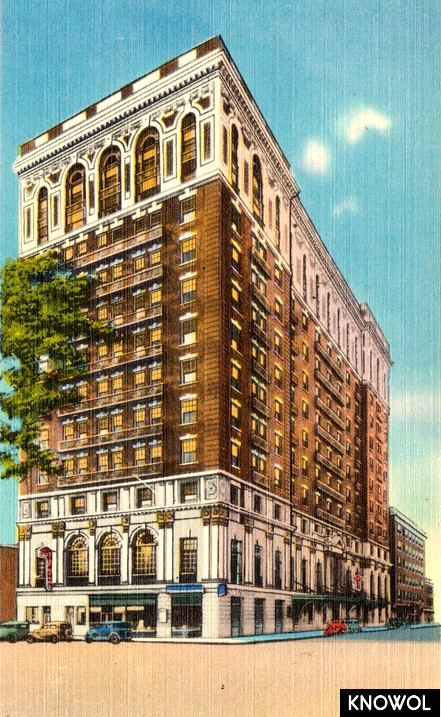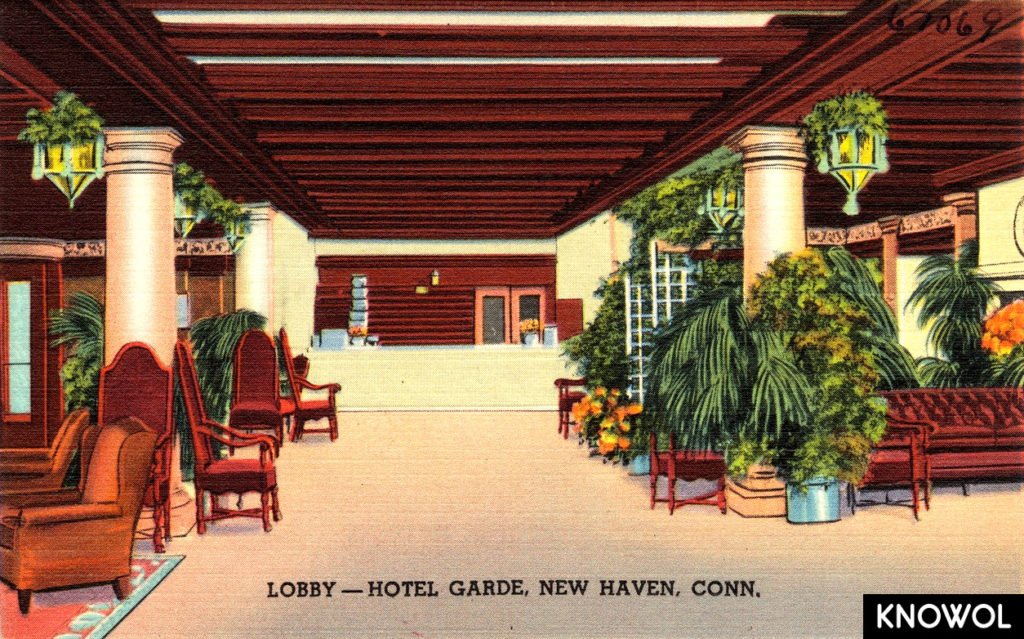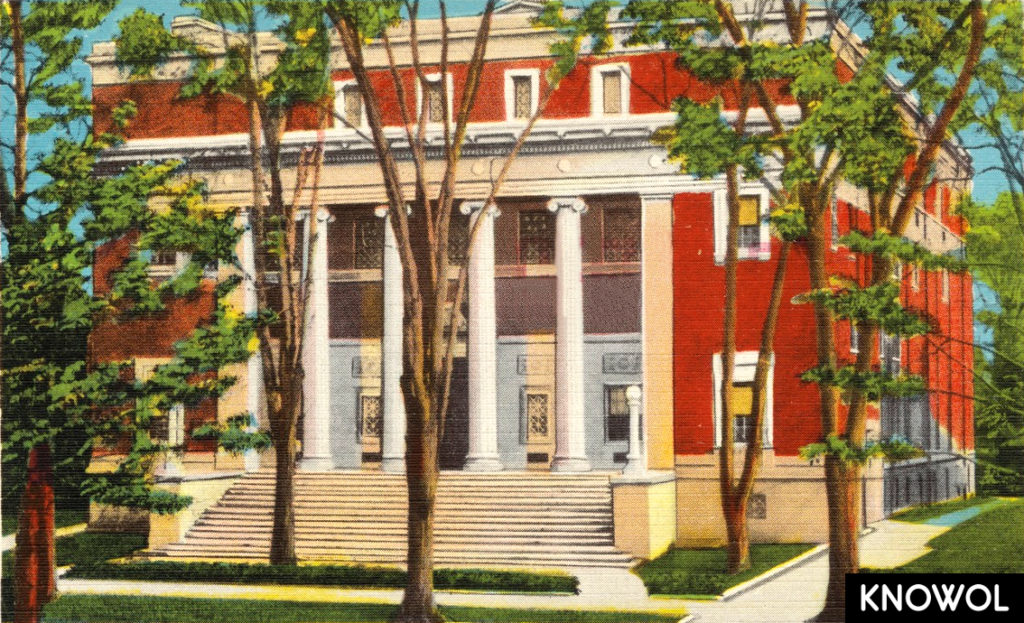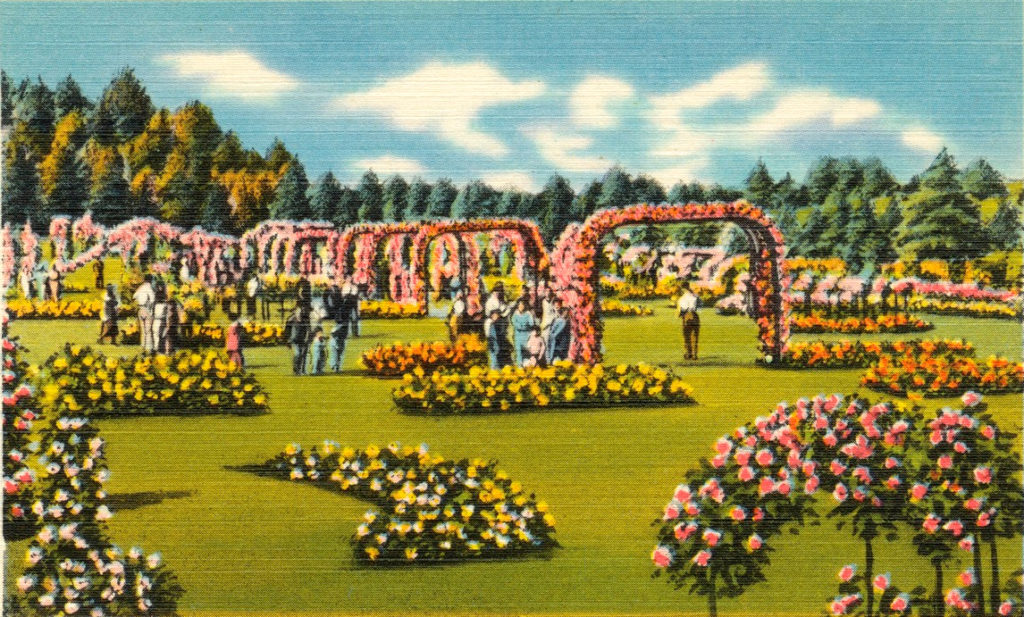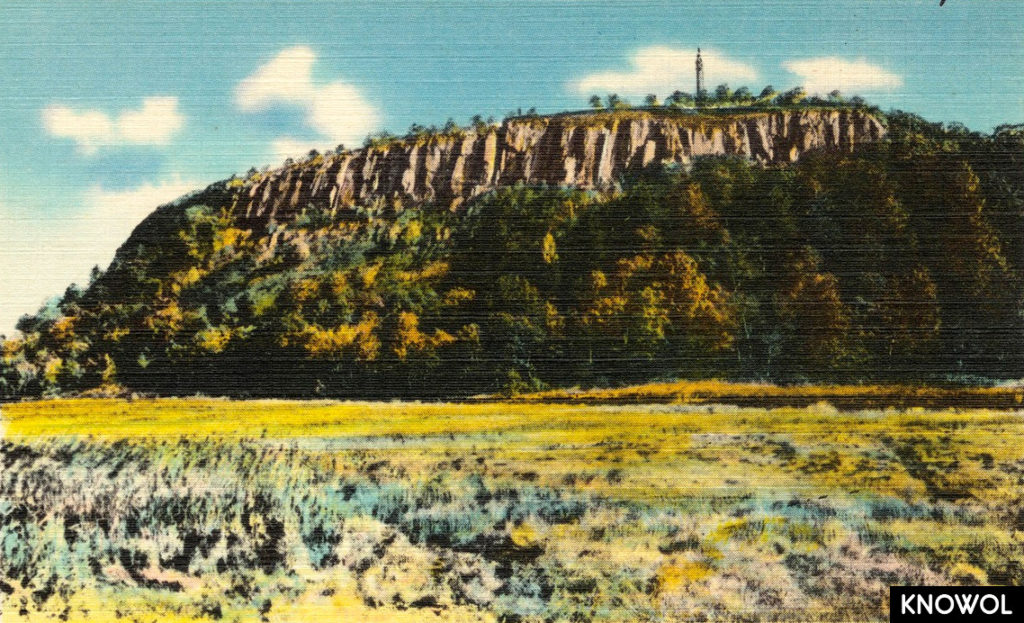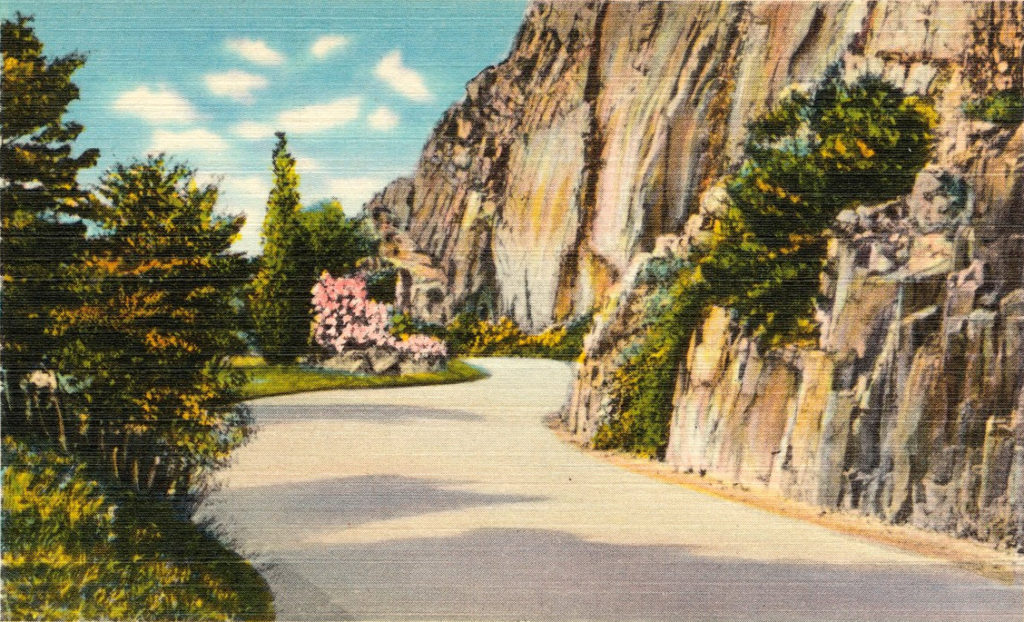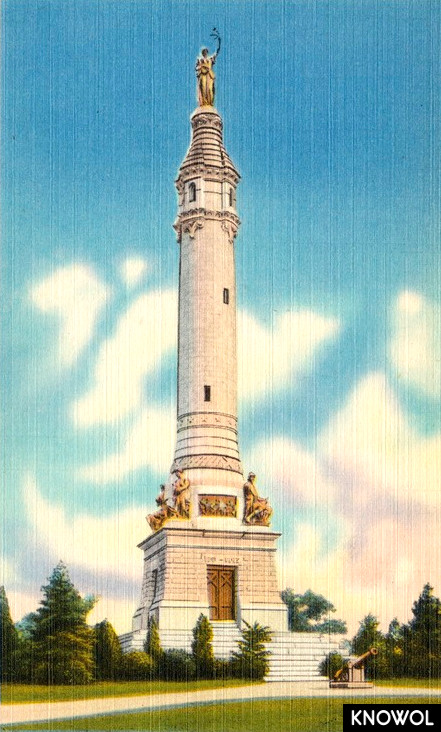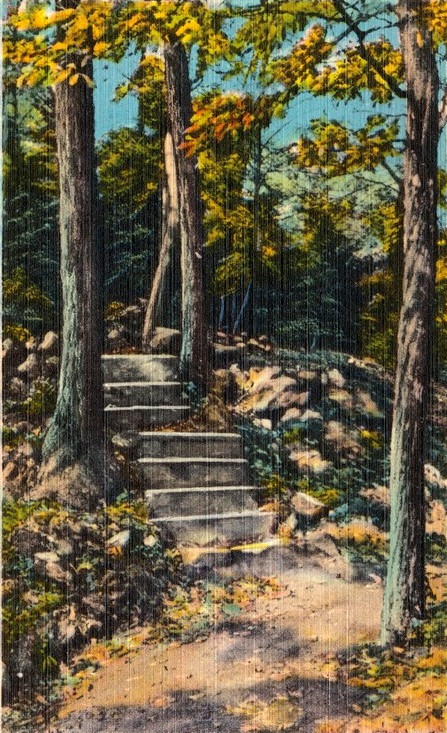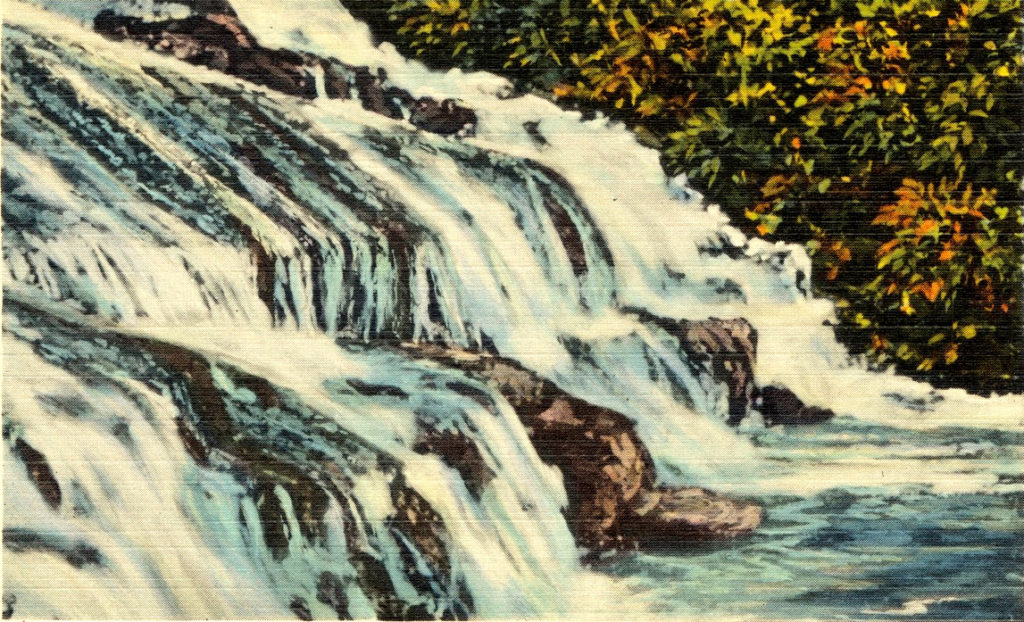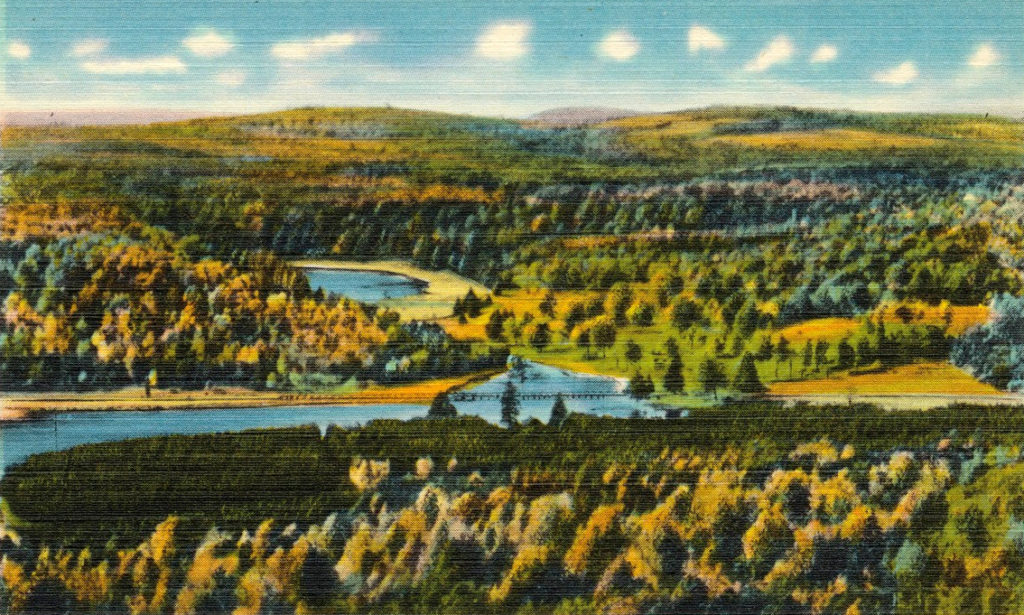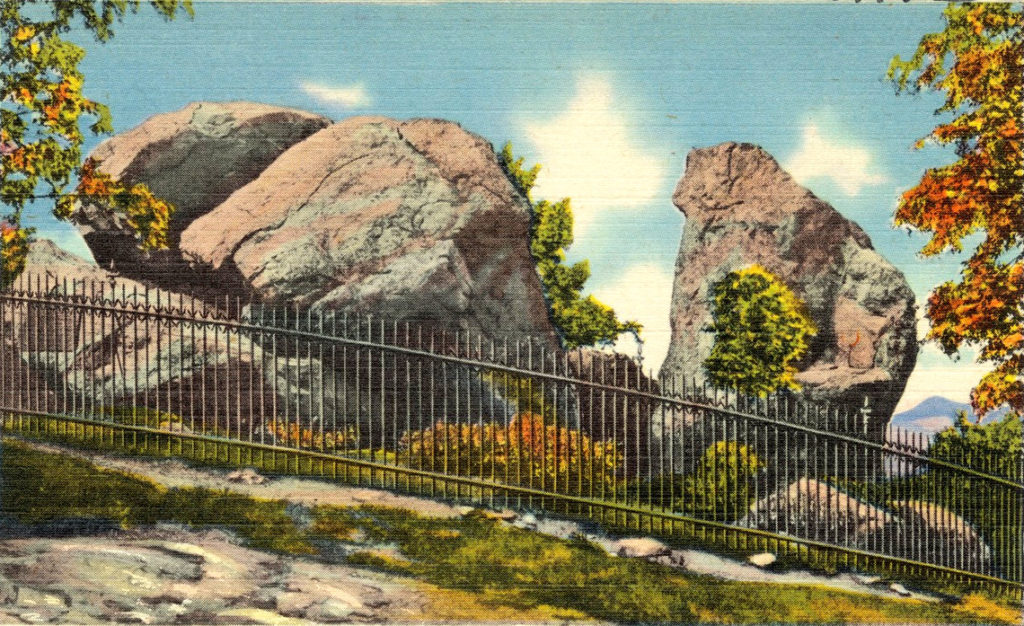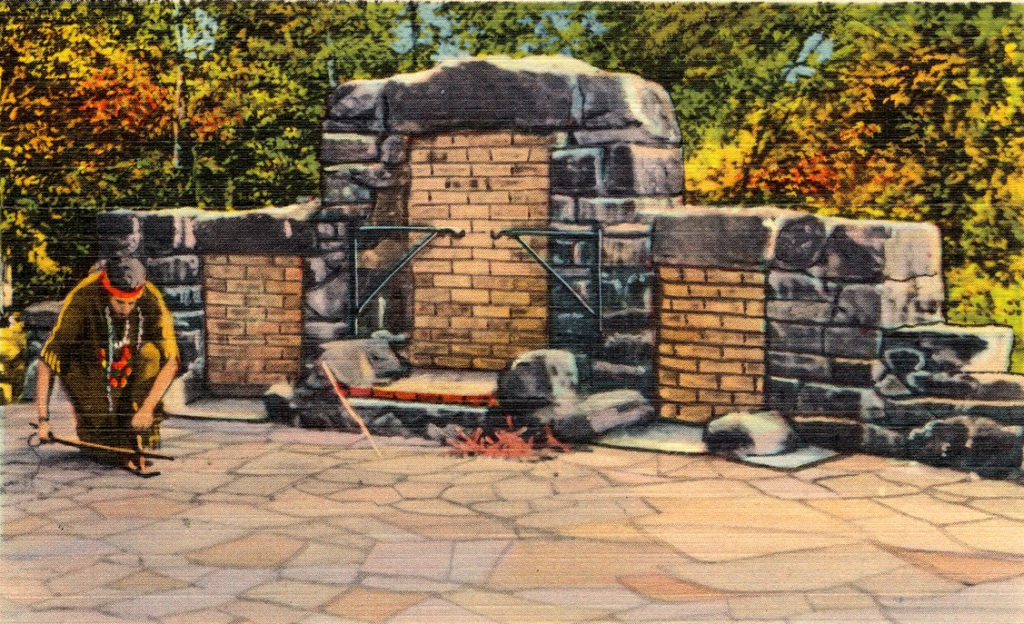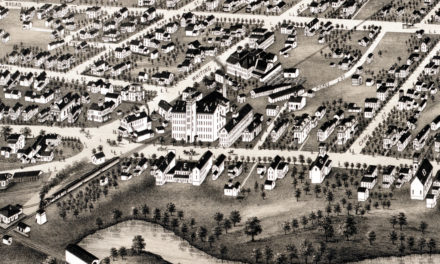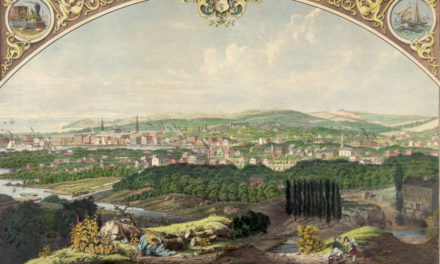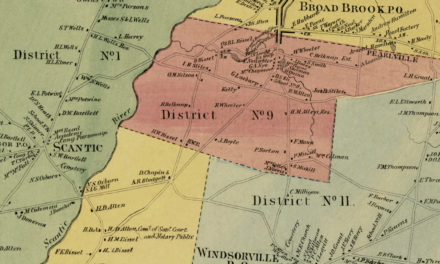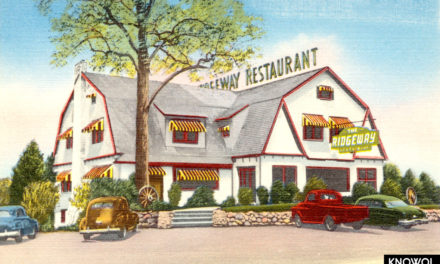New Haven is the second largest city in Connecticut. The city was founded in 1638 by English Puritans, and served as the co-capital of the state from 1701 – 1873. Before the European arrival the area was the home of the Quinnipiac Indians.
New Haven incorporated as a city in 1784, with Roger Sherman, one of the founding fathers and a signer of the Constitution, serving as its first mayor. The city is well known as the home of Yale University, and is the birthplace of many famous Americans including Eli Whitney, President George W. Bush, Charles Goodyear, and Steve Wynn.
The following pictures of New Haven come from postcards dated between 1940 – 1950. The images have been digitally restored to reveal the beauty of New Haven at its cultural and economic peak.
1. New Haven Green, New Haven, Conn.
The New Haven Green is a 16 acre privately owned park in downtown New Haven. The green is comprised of the central square of the original nine-square settlement plan of the original Puritan colonists of New Haven.
For the first 150 years of the city’s existence, the New Haven Green served as a burial ground for prominent New Haven residents. In 2012, a tree on the green fell during Hurricane Sandy, unearthing a skull dating back to the 1700’s.
Today the New Haven Green hosts numerous public events, and is a prominent feature of downtown New Haven.
2. Bird’s-eye view of New Haven, CT
This picture provides a birds-eye view of downtown New Haven as it looked in the 1950’s. Today New Haven has one of the most residential downtown areas in the United States, with approximately 7,000 inhabitants.
3. Chapel Street, looking east, New Haven, CT
This image shows Chapel Street as it looked in the 1940’s. There were stores such as F.W. Woolworth, Spector’s Jewelry, and a billiards hall. Chapel Street remains a popular area with stores, bars, and a variety of restaurants.
4. Chapel Street, looking west, New Haven, CT
In this image you can clearly see Hotel Taft, which is now known as the Taft Building. Hotel Taft was built by a group of local investors including Horace Taft, the headmaster of the Taft School in Watertown, Connecticut, and ancestor of President William Howard Taft.
The Hotel Taft opened for business on January 1, 1912. At the time it was an ultra-modern, twelve story building with 450 rooms. The first two floors consisted of a shopping area, restaurants and bars, while the top two floors housed a large ballroom. The lobby was 70 feet tall and featured a Tiffany’s stained glass dome, said to be the largest stained glass dome ever created by Louis Comfort Tiffany.
Today the building is home to the Taft Apartments. The original stained glass dome and grand lobby remain intact. You can read more about the buildings history at the Taft Apartment website.
5. Church Street, looking north, New Haven, Conn.
Church Street in New Haven. The street still retains many of the same buildings. Click here to see what the street looks like today via Google Streetview.
6. Municipal Airport, New Haven, Conn.
Municipal airport opened on August 29, 1931. The airport is now known as Tweed New Haven airport. It was renamed in 1961 in honor of John H. “Jack” Tweed, the first manager of the municipal airport.
7. “Old Tower Light,” Lighthouse Point Park, New Haven, Conn.
The old tower light is now known as Five Mile Point Light, or Old New Haven Harbor Lighthouse. The lighthouse is located at the entrance to New Haven Harbor, approximately five miles away from New Haven. The Five Mile Point Light was deactivated in 1877 when the nearby Southwest Ledge Light was completed.
The lighthouse remains within Lighthouse Point Park and was listed on the National Register of Historic Places, along with the keeper’s house, in 1990.
8. Municipal Golf Course, New Haven, Conn.
New Haven’s municipal golf course is today known as Alling Memorial Golf Club.
9. U.S. Post Office and Court House, New Haven, CT
This is the Richard C. Lee United States Courthouse in New Haven. The courthouse was built between 1913 – 1919 in the Classical architectural style, on the east side of the New Haven Green. The building used to serve as both a post office and courthouse, but the post office moved to another location in 1979. The building was once scheduled for demolition in the 1960’s, but was saved, and is now listed on the National Register of Historic Places.
10. County Court House, New Haven, Conn.
The New Haven County Courthouse is located at 121 Elm Street in Downtown New Haven. The building was created in 1917, and faces the New Haven Green. The courthouse is infamous for hosting Griswold V. Connecticut, a historic trial in which the Supreme Court ruled that a state banning the use of contraceptives violated the right to privacy.
11. The Union & New Haven Trust Building, New Haven, Conn.
The Union and New Haven Trust building is located at 205 Church Street, and is now known simply as “The Union.” The building was constructed in 1927, and sits on the corner of the New Have Green. The building was built to serve as the home of the Union and New Haven Trust Co. bank. It was the tallest building in New Haven from 1927 – 1938.
12. YMCA and YWCA, New Haven, Conn.
This building, at 52 Howe Street in New Haven, was constructed in 1929. The building used to serve entirely as a YMCA and YWCA, but today has been turned into apartments known as The West Village Apartments. The four story structure now consists of 127 apartments.
13. Hotel Taft and Annex. New Haven, Conn.
This image provides a much better view of the Hotel Taft. Throughout history, this corner has served as the home of more than five taverns and hotels. The hotel was owned by ancestors of William Howard Taft, and he lived in the hotel for eight years immediately following his term as president, while teaching constitutional law at Yale.
During prohibition, the building also housed a speakeasy in its basement. Due to its proximity to the Shubert Theater and Yale University, the hotel and speakeasy served many famous personalities over the years.
14. Lobby — Hotel Garde, New Haven, Conn.
On June 1, 1894, William Henry Garde opened the Hotel Garde in New Haven. At the time it was the best hotel in the city, and he ran it until 1904 before passing it to his son, Walter S. Garde. The building was located on the corner of Asylum and High streets. and contained 274 rooms. It was one of the highest class hotels in the State of Connecticut.
15. Masonic Temple, New Haven, Conn.
Hiram Lodge #1 is the oldest masonic lodge in the state of Connecticut, and the seventh oldest in the united States. You can read more about the lodge’s history at the Hiram Lodge website.
16. Pardee Rose Garden, East Rock Park, New Haven, Conn.
The Pardee Rose Garden is located at 180 Park Road in Hamden, CT. The garden was established in 1922 and spans two acres. The gardens are part of New Haven’s East Rock Park.
17. East Rock, New Haven, Conn.
East Rock is a long trap rock ridge located in New Haven. The ridge was formed 200 million years ago during the Triassic and Jurassic periods. The ridge is a prominent landscape feature of New Haven and the central point of East Rock Park. The second highest peak of the ridge is called Whitney Peak, named after Eli Whitney, the inventor of the cotton gin and a former resident of New Haven.
18. English Drive, East Rock Park, New Haven, Conn.
English Drive is a paved path leading to the summit of East Rock. The road is closed to automobiles but open to bikers and walkers, offering a scenic path to the summit for visitors of East Rock Park.
19. Soldiers’ Monument, East Rock Park, New Haven, Conn.
The Soldiers and Sailors monument is a war memorial at the summit of East Rock. The monument was erected in 1887 and honors residents of New Haven who gave their lives during the Revolutionary War, the War of 1812, the Mexican War and the Civil War.
20. Footpath, West Rock Park, New Haven, Conn.
West Rock park is the sister formation of East Rock. West Rock Ridge State Park is part of the Metacomet Ridge that extends from the Long Island Sound to Vermont, and has a variety of hiking trails throughout the park.
21. Wintergreen Falls, West Rock Park, New Haven, Conn.
According to West Rock Trails, this waterfall is just outside West Rock’s main entrance, across Wintergreen Avenue on the grounds of the West Rock Nature Center. For detailed instructions to find the trail, you can use this map.
22. View from Baldwin Drive, West Rock Park
This image shows the scenic overlook of West Rock Park from Baldwin Drive. Governor Simeon Baldwin donated more than $100,000 to the New Haven Park Commission in 1927, leading to the conservation of a large portion of the ridge and construction of Baldwin Drive in the 1930’s. Baldwin Drive is still open to the public for walking and biking.
23. Judges’ Cave, West Rock Park
Judge’s Cave has an interesting history. In the 1700’s, Edward Whalley, a military leader during the English Civil War, and his son-in-law, William Goffe, fled England to avoid being put to death by King Charles II for their role in the execution of his father, Charles I.
The pair fled to New England from London, eventually finding themselves in New Haven. They lived in the city for a period of time until an order was sent for their arrest, causing them to flee into the wilderness in fear of being discovered by royal informants. The pair took shelter near this rock, and stayed hidden in the cave for a month during the summer of 1661.
A plaque currently on the rock reads,
Here May Fifteenth 1661 and for some weeks thereafter Edward Whalley and his son-in-law William Goffe, members of Parliament General, officers in the army of the Commonwealth and signers of the death warrant of King Charles First, found shelter and concealment from the officers of the Crown after the Restoration.
“Opposition to tyrants is obedience to God”
1896
24. Margaret Fisher Memorial Fireplace, West Rock Park
Margaret Fisher was the daughter of Professor Irving Fisher of Yale University. Margaret was diagnosed with schizophrenia, and Fisher had her treated at the New Jersey State Hospital at Trenton, whose director was the psychiatrist Henry Cotton. Cotton believed mental illness resulted from infectious material in the roots of teeth, bowel recesses, and other places in the body, a theory called “focal sepsis”,
Cotton believed surgical removal of the infected tissue would alleviate the patient’s mental disorder, so he removed sections of Margaret Fisher’s bowel and colon, which eventually resulted in her death. This fireplace was constructed in her memory. According to a reader, the Margaret Fisher Memorial Fireplace was used by the Campfire Girls in the 1940’s and 50’s.
Thank you to Woody H. and Cindy D, thoughtful readers who were able to provide information on this fireplace.
Share with your friends using the buttons below!

